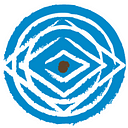The Space Between Knowledge and Understanding
This summer, WLS instructors joined forces with schools from all over the country. Together, we embarked on worldly adventures to explore other cultures and to view life through a new lens. We accompanied others along our journey and laid our own fresh tracks.
As our trips came to an end, it was time to reflect on how we will take away all that we have garnered and apply it to new and novel challenges in the upcoming year. As I sit here on an animal rescue ranch, and watch the alpacas, who were set free in the streets because they didn’t grow the finest fiber, the emu named Kevin who was turned out because he was a girl, and the 4 month old fawn, named Goldie, who someone thought would make a great pet, I am reminded by the ranch hands that caring for living things goes beyond what they eat and shoveling their scat. It requires a deeper understanding of their culture: the sounds they make to communicate, how they protect one another as they drink water, and how they instinctually guard their sensitive bellies based on their native environment. The environment can shed light on the culture, so in return the culture can shed light on the environment. As we look deeply at these connections, it helps us to understand how these animals survive and thrive.
On the ranch, my two daughters experienced a shift in their understanding of basic needs and the connections within an ecosystem, and how needs could be met through rudimentary actions. As they observed, they began asking questions about how dissimilar animals interacted with each other. “Why are the pig and emu such close friends?” “Does a llama speak the same language as the alpaca?” “Why do some poops look like jellybellies and some look like hamburgers?” From the perspective of a child, the question of similarities and difference are easily connected when you refer to eating, sleeping, and appearances. However, it is when you get to the intricate layers of connectedness that we have to dig deeper into our understanding of norms and cultures to explain to a five year old how the emu understands the needs of the pig, and that they can safeguard each others needs and protect one another from harm. On a WLS trip, all the instructors and school teams set out as learners who are removed from their usual context to participate in the world, and to view it from new and different perspectives. It is a hallmark time for many of our young learners as they are involved in real-life challenges that have to be solved with other cultures they have a rudimentary understanding of. The WLS programs are designed to create a sense of wonderment and curiosity about all that can be garnered from global experiences and to push learners out of their comfort zones. While being an active participant in other cultures, we strive to create an immersive experience that moves our teams beyond surface level appreciation to real-life cultural awareness. Kids and adults connect in meaningful and deeper ways that later impact their decisions, reactions, and bridge the gaps between content and context, both of which have reciprocal relationships.
Culture and environment are reciprocal. Therefore, our classrooms should reflect this reciprocal relationship. On the ranch Jigsaw the pony and Puzzle the donkey are bonded as a pair. The renamed emu, Kiki, is deeply bonded to a pig named Will. As I observed the rescue ranch culture, I wondered how we might help each other move from information and experience gatherers to those who understand their personal impact on the world around them. It reminds me of Destin Sandlin’s Smarter Everyday video. Destin is an engineer that uses science to explore how our own bias can prevent us from learning something new — even though we have the information and have had an experience. In Destin’s words, “information does not equal understanding.”
In our classrooms, we strive to provide the opportunities and experiences that allow our students to turn information into knowledge so they develop a deeper understanding of the content we teach. It is between this space, between knowledge and understanding, that we have our greatest opportunity as teachers to make relevant connections in the community. We can use the community as our partners to bring content to life and contextualize our kids’ learning. We, as teachers, can take our summer experiences and reflect on how the various communities make us think, laugh, sing, work, and be more introspective. Our voices, as well as our silence can be the catalyst for our learners to bridge the gap between knowledge and understanding.
We have the chance to develop projects that allow our kids to make an impact on others. Through meaningful and effective reflection, we can guide our students as they turn their knowledge into understanding.
— Jill Ackers-Clayton, World Leadership School Teacher Coach
